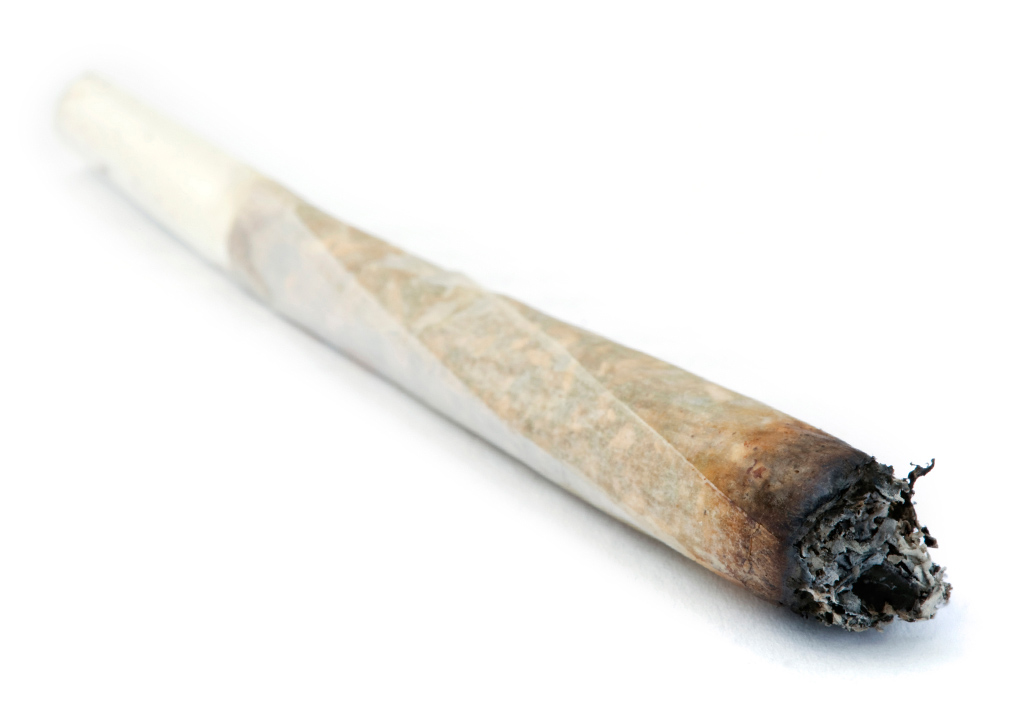Marijuana impairs the memory, causes restlessness and paranoia, has a deleterious effect on motor responses, elevates heart rate and increases appetite (particularly for crisps).
When you look at the relatively established, if hotly debated, facts, it’s a wonder that anyone smokes the stuff at all. But marijuana is also notorious for being the drug of choice for diehard vinyl junkies; a natural and comparatively safe way to enhance the experience of listening to music, or in the case of Yes’s bloated prog monolith Tales From Topographic Oceans, to make the listening experience in any way tolerable in the first place. Or at least that’s the theory.
In order to confirm that marijuana use is eminently conducive to the holistic improvement of one’s audio indulgences, Classic Rock has charged me with the arduous task of getting, as the kids may say, mashed up – and then listening to a series of albums on vinyl. It’s a dirty job, folks. And here’s what happened…
Chris Robinson Brotherhood – Phosphorescent Harvest (2014)
The only way to begin this serious (and definitely not enjoyable) experiment is to listen to an album that was almost certainly created with a certain waft of marijuana smoke hanging in the air. I have smoked my first spliff of the evening in preparation – for those who care about such things, the weed is British-grown and of fairly high quality – and assumed the textbook stance of crossed legs and slight shoulder hunch.
Phosphorescent Harvest is a wonderfully warm and vibrant record anyway, of course, recorded primarily on analogue equipment and blessed with the kind of refined dynamic range that lends itself to reproduction on vinyl.
But even after one magic bifter, the clarity of the sonic highs and lows is immediately sharpened, as if everything has been newly rendered in aural 3D. Guitar solos spiral upwards, a brief snatch of flanged – yes, flanged – pedal steel lurking in the background becomes curiously prominent where previously it was barely discernible and, most strikingly, Robinson’s voice becomes startlingly present, as if he’s whispering into my THC-assailed (that’s Tetrahydrocannabinol, see boxout) ears from mere inches away.
The vibe, all-important in this stoner dimension, is very good indeed, although having to get up to flip the record every 15 minutes is already turning into a ballache.
Thin Lizzy – Renegade (1981)
A second spliff has been sparked and it’s time for a little-known stoner classic. Renegade is my favourite Thin Lizzy studio album. Not a popular choice, I know, but then have you ever listened to it while soundly baked? I have done this before, believe it or not, and my love for Renegade stems wholly from the first time I listened to it while stoned. Repeating the process now, it is still abundantly clear that this is one of the most criminally overlooked albums in rock history.
For a start, the production is extraordinary: from the epic prog-metal bluster of the opening Angel Of Death through to the curiously dark and edgy It’s Getting Dangerous, Renegade is a beautifully layered and idiosyncratic thing, with countless subtleties that one could easily miss without the aid of few lungfuls of weed smoke. Once again, the vocals seem to hover in the centre of the room, Phil Lynott’s intermittently laconic and lascivious delivery dancing between layers of harmonised guitars and rhythmic rumble.
The best bit is during The Pressure Will Blow, when Scott Gorham and Snowy White’s twin-lead break causes instant goosebumps and tingling around the spinal area. That said, a flurry of crackles and pops from the vinyl’s sturdy but well-worn surface make me jump out of my skin and spill my tea.
SCOTT WALKER & SUNN 0))) – Soused
A cheeky pipe and a third spliff seem perfectly acceptable when summoning the wherewithal to confront Scott Walker’s mind-bending collaboration with drone denizens Sunn 0))). Released last year to a mixture of acclaim and terror, Soused is probably not the album to listen to on anything more potent than marijuana, but the cheery vibes elicited by Thin Lizzy have put me in a good frame of mind to deal with Walker’s nightmarish stream of consciousness and Sunn 0)))’s tectonic squall.
Soused relishes the notion of space in music: there are grand, sustained silences and moments of fragile minimalism to balance out the dominant cacophony, and now that I am prostrate on the floor and staring, red-eyed, at the ceiling, all I can do is surrender myself to this sonic journey. In fact, after about three minutes of opening track Brando, I close my eyes and take the plunge, disappearing into Soused’s labyrinth of horrors. The album doesn’t sound any less weird to the baked brain, but neither does it make much more sense. Instead, I find myself melting into the carpet as my skull begins to resonate in harmony with the woozy throb of Sunn 0)))’s amorphous backdrops and Walker beams his wonky poetry directly into my brain.
Turning the record over has now become distinctly problematic, however, and I spend a good two minutes attempting to place the needle on to Soused’s groove-less side four before realising my error and giggling like an idiot.
Pink Floyd – Dark Side Of The Moon (1973)
So here we are – the stoner motherlode. I’ve become so used to Dark Side on CD that I feel like I’m standing in the shoes of the original hippie generation that experienced the album when it was box-fresh on vinyl. An old and tattered original pressing is on the agenda tonight, and although the needle skips alarmingly during Speak To Me, the battered plastic holds up remarkably well and sounds as richly rendered as any remastered CD version I’ve heard. Familiarity is the key here: where Soused was sporadically unsettling, Dark Side is wired into my DNA and surrendering to its charms after a fairly Herculean quantity of skunk is a no-brainer.
Pink Floyd propagated the notion of total rock’n’roll immersion, and while this record still sounds glorious in the cold light of sobriety, its whole aesthetic is clearly aimed squarely at the inveterate stoner. It’s easy to forget what a beautiful-sounding album Dark Side is, but wallowing within my wacky-baccy cocoon I become newly aware of what a fabulous ensemble performance this is. The alarm clocks at the beginning of Time and Money’s eruption of cash registers both make me jump and, bizarrely, cause the skin on the top of my head to ripple… or at least that’s what it feels like.
Whether or not being massively stoned has made the lyrics any more poignant or profound is anyone’s guess. I’m too busy wafting between Nick Mason’s kick drum and Dave Gilmour’s guitar cab, like some kind of overweight and pot-addled sprite, to notice.
========================
And now for the science bit…
The ‘high’ from marijuana comes from a chemical called Tetrahydrocannabinol (or THC) and occurs when the chemical interacts with cannabinoid receptors in the brain. THC has a significant effect on the parts of the brain that process what we see and hear, which is why some – well, most – users experience enhanced enjoyment from listening to music or watching movies.
Cannabis and marijuana use also increases the activation of dopamine neurons in the brain, which is widely associated with pleasurable activities like sex and drugs (and rock’n’roll, natch) but has also been linked to instances of psychosis, particularly among heavy users. Pleasurable feelings while smoking are more accurately attributed to natural opioids like endorphin and morphine, which the brain produces in greater amounts under marijuana.
Numerous studies of marijuana’s effect on hearing have concluded that users experience increased auditory acuity, greater spacial separation between instruments on a recording and, somewhat less commonly, some form of synaesthesia – i.e. when aural stimulation leads to the visualisation of certain colours.

- Want some new wax? Explore the best Black Friday vinyl deals
- Treat your vinyl to the best turntables in the world
- On a budget? Spin 'em on the best budget turntables instead
- 9 cool vinyl record storage ideas
- Does 180g vinyl sound better?

